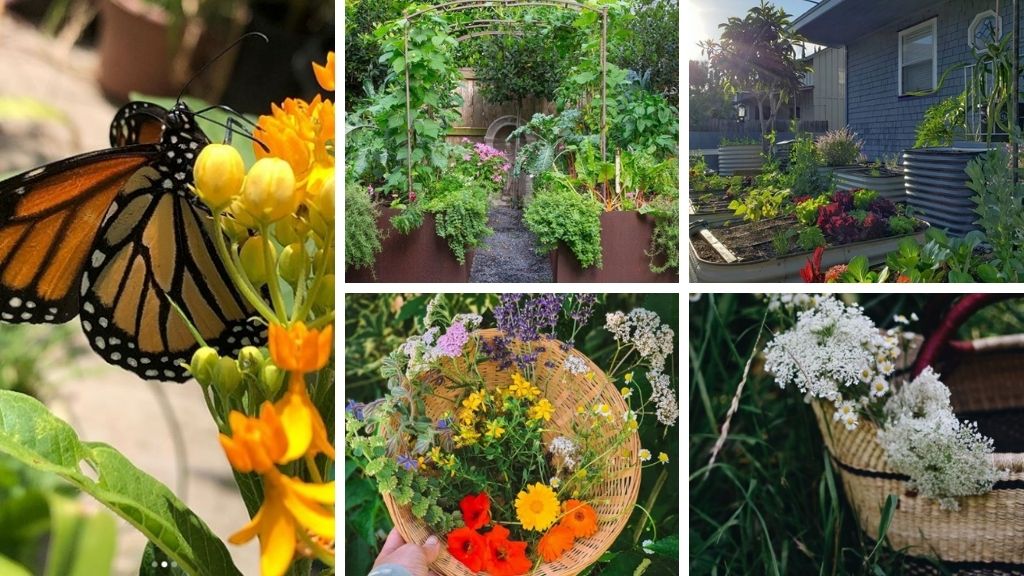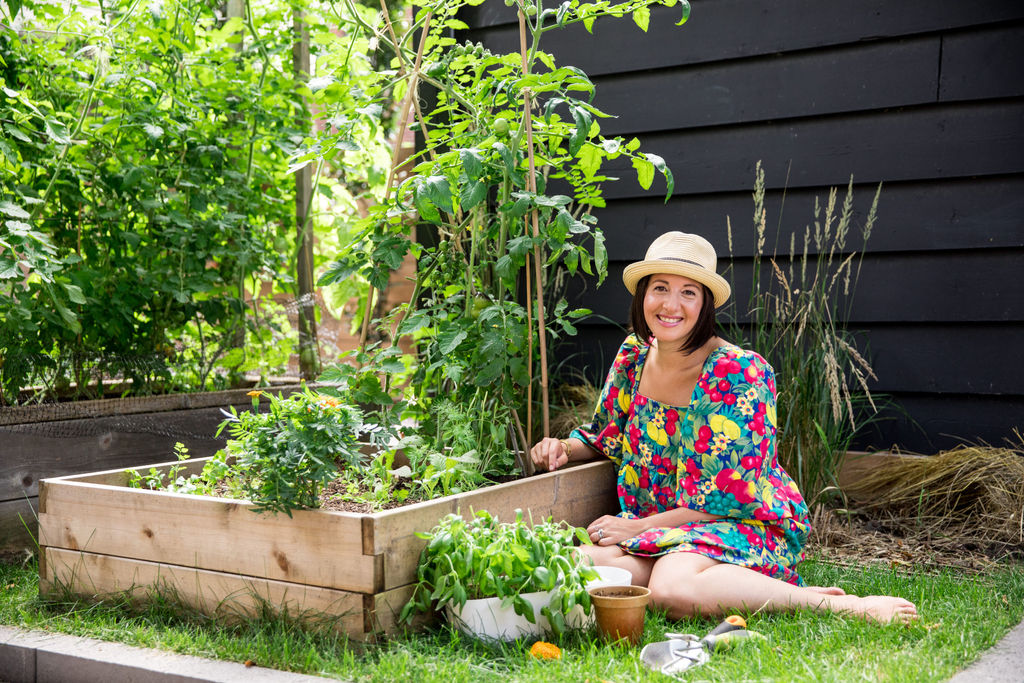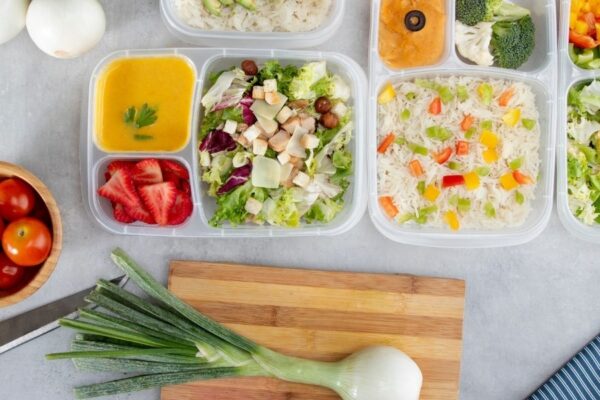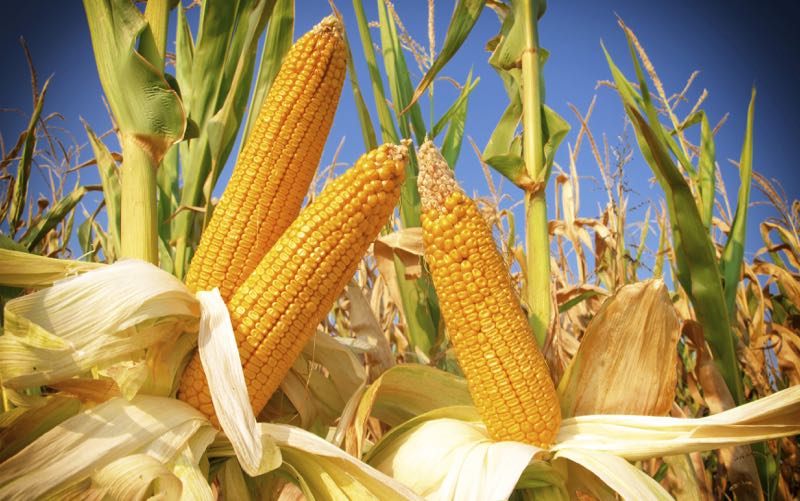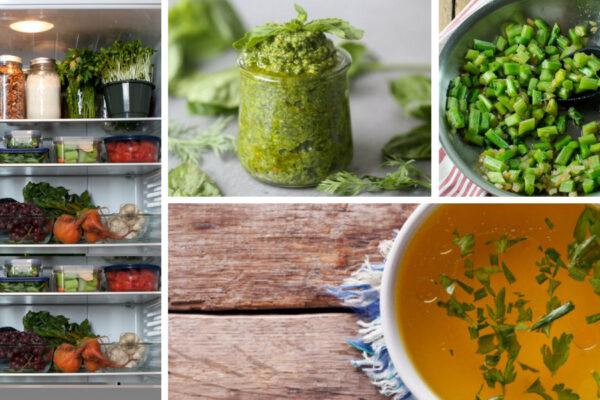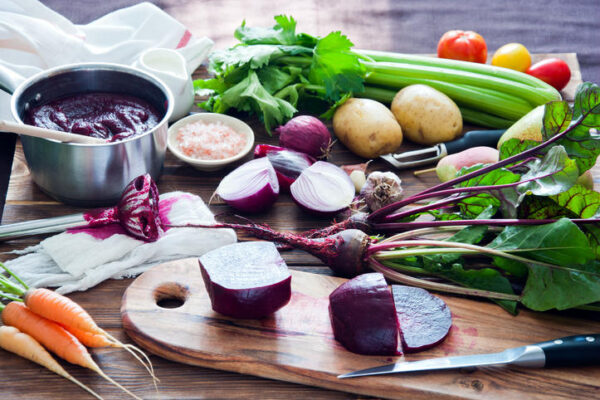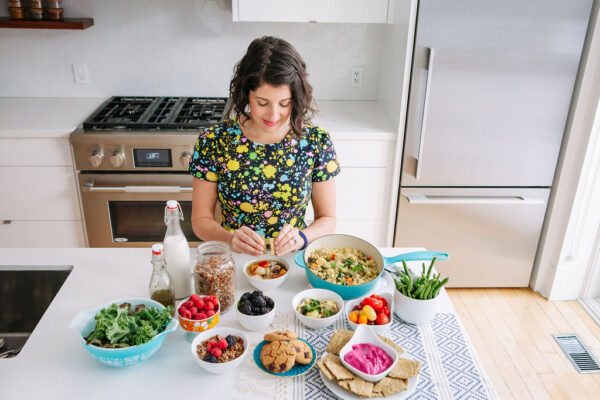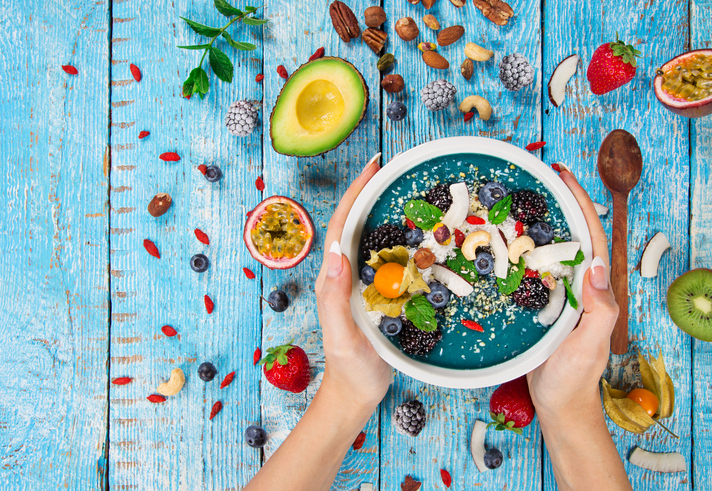How to Get Started Growing Your Own Food
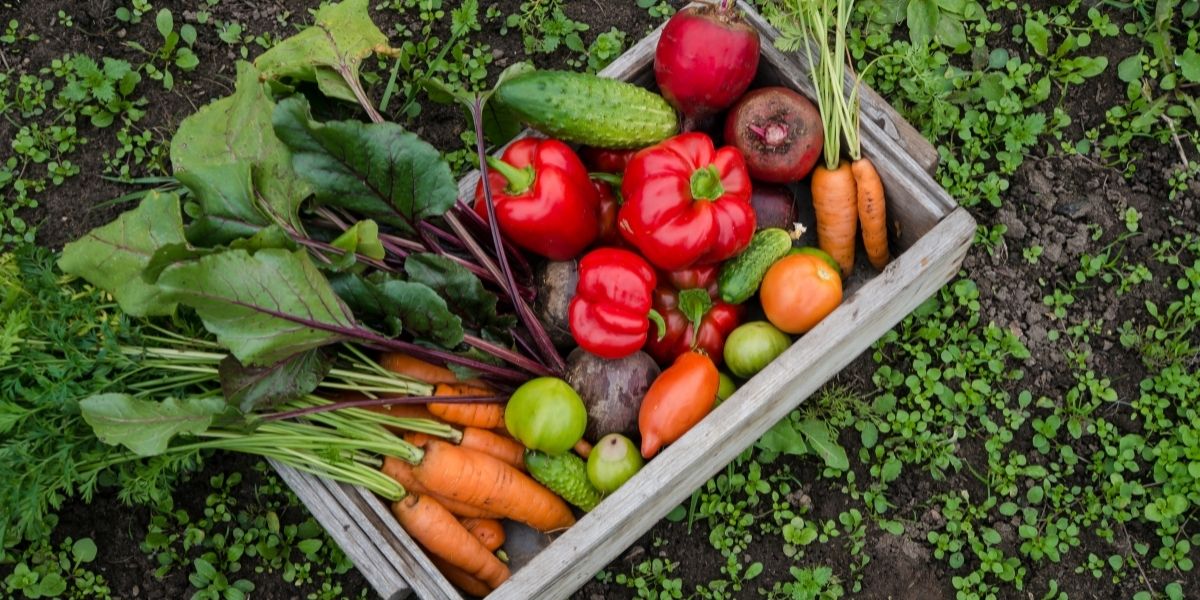
For many new gardeners, growing your own food may seem like a daunting (or even impossible) task. When you get right down to it, there are only a few key components you need for a healthy garden – but of course, there are many variables that can impact the overall results. I believe that anyone can learn to grow their own food successfully, whether you have a windowsill or an expansive backyard. Like with culinary nutrition and cooking, start with what you have and learn basic techniques before moving on to the complexities. In this guide to growing your own food, I’ll show you how to get started!
Benefits of Growing Your Own Food
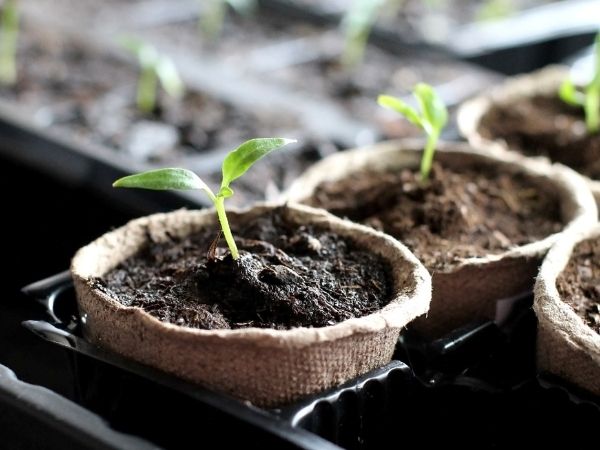
Reduce Food Waste
Growing your own food cuts back on food waste in a big way. When you grow your own food, you have the ability to use the “ugly food” that most stores throw out because it isn’t market-pretty. You are able to harvest only what you need so nothing sits in your fridge or wilts before you have had a chance to use it.
More Nutrients
Fruits, vegetables, and herbs have more nutrients when grown in healthy soil. Food starts to lose nutrients as soon as it’s harvested. Most produce at grocery stores are picked days or even weeks before and often transported from far-away farms.
Great Taste
Seasonal, just-harvested food tastes fresh and delicious! You might be surprised by what selective eaters (both adults and children!) will eat when they’ve had a hand in growing their food or can easily sample fresh from the garden.
Save Money
Growing your own food can also help you save money at the grocery store. While there can be some initial investment when purchasing seeds, soil and other things you need to get started, once you get into the flow you’ll likely be making fewer trips to the grocery store.
Exercise and Vitamin D
Growing your own food, particularly if you have access to outdoor spaces versus growing your own food indoors, will help you to stay active and get fresh air and Vitamin D – just ensure you practice safe sun protection.
Improved Mental Health
Being in nature and exposed to greenery and plants through gardening helps to improve mental health and cognition, as well as lower stress levels and reduce feelings of isolation (especially for those who use community gardens).
Knowing the basics of what plants need will help get you started with growing your own food. Let’s get growing!
Growing Your Own Food: What You Need
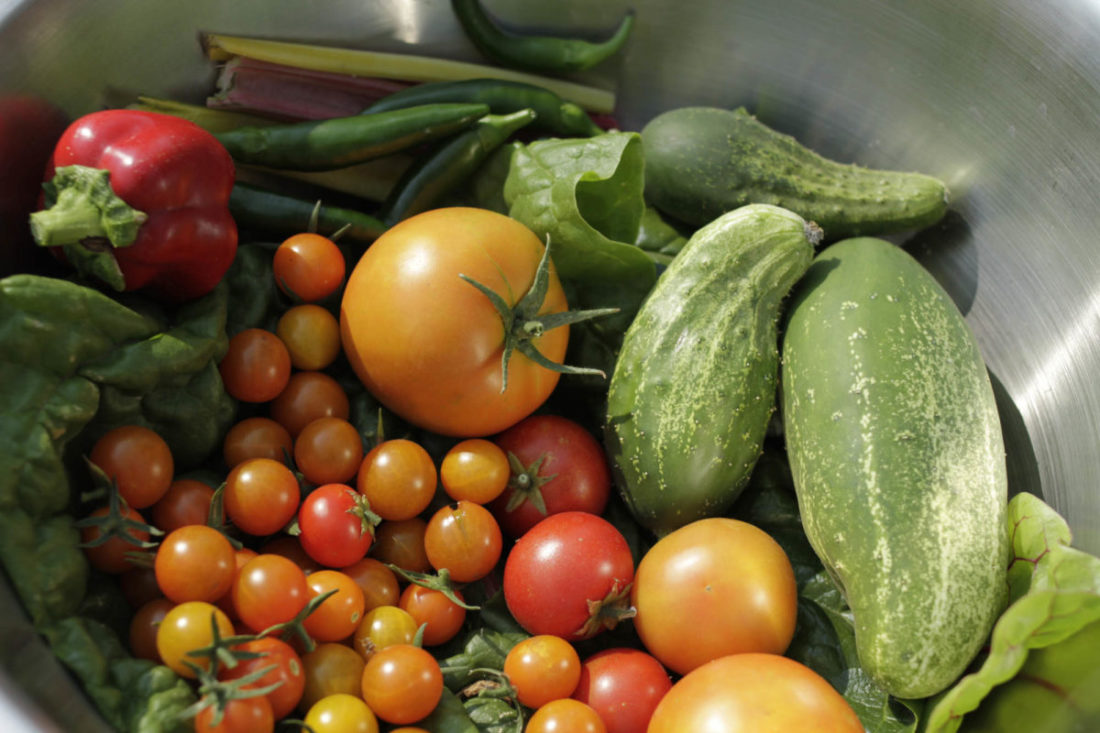
Soil
There are many reasons to grow your own food and it all starts with the soil. Healthy living soil is the foundation of a thriving garden. It’s the microbiome of the garden, teaming with microbes, bacteria and other organisms that help feed plants by breaking down the nutrients in the soil. Healthy soil has worms, fungi and other organic matter. It’s a web of life, whereas dirt is considered dead, lacks nutrients or any of the organic matter that helps to grow food.
Our soil isn’t what it used to be when our great grandparents were tending their gardens; we now have to build up our soil by amending it with things like compost, mycorrhizae fungi, worm castings, kelp meal, etc. Soil health is what contributes to the nutrients in the fruits and vegetables we eat. So when we have nutrient-depleted soil, we likely have nutrient-depleted food crops.
Soil is the most important component of your garden, and it’s where you’ll want to focus your budget above anything else. There are many garden soil recipes and mixes you can make or buy. A popular recipe is:
- 50% topsoil
- 30% compost and
- 20% other organic matter like chicken manure, vermicompost, mushroom compost, composted cow manure at a rate of 5% each
Avoid peat – it just isn’t sustainable. You can buy bagged soil at a garden center or home improvement store that is labeled for your growing method or purchase it in bulk.
Soil Buying Tip
When it comes to buying soil in bulk you definitely want to go to the soil yard to see it and feel it. Hold a clump in your hand and squeeze it. Does it fall apart immediately? Is it still clumpy? Does it mostly stay formed but falls away? You want your soil to stay formed a little bit, but also loose enough that it can be crumbled easily.
You will want to continue to work on your soil health each season by adding amendments. Organic compost is my number one recommendation.
Sunlight
Most edible plants need at least 6 hours of sunlight per day to produce enough energy to fully mature or set fruit. Some plants require more than 6 hours of sunlight, preferring 8 hours. These are some general guidelines for how much sun specific plants need:
- Fruiting plants like eggplant, melons, peppers, and tomatoes want 8 hours of direct sun.
- Root producing vegetables want a minimum of 6 hours of sunlight (8 is better) and these include radishes, parsnips, carrots, turnips, beets, and potatoes.
- Leafy greens can handle less sunlight; about 2–4 hours of direct sun and some prefer shade during the hottest parts of the day depending on your location and season.
- Most herbs prefer 4+ hours of sun per day.
Why Is Sunlight Important?
Plants that do not get enough sunlight will be weaker, and may not reach maturity or be smaller than their intended size. Keep this in mind when setting up your growing space because it will help determine what you can grow successfully.
Water
Too much or too little water can be detrimental. More plants die from over-watering than under-watering. Unfortunately, there isn’t a one size fits all schedule. It is very dependent upon the temperature, rain, wind, and microclimate of your garden area.
You want to have 1 inch/2.54 cm per week of water for your garden with the low and slow method. This means you water deeply, less frequently, and at the surface of the soil. Roots will seek out water, if you water shallow, the roots will be shallow. Watering deeply means the roots will seek out the water deeper in the soil and as a result, will be stronger and more drought-tolerant.
You have the option of hand watering, drip irrigation, soaker hoses, and emitter tubing.
Watering Tip!
One way to check if your plants need water is by putting your finger down into the soil and pulling it out; if it is dry or mostly dry, your plants need more water.
Growing Your Own Food: Planting Tips
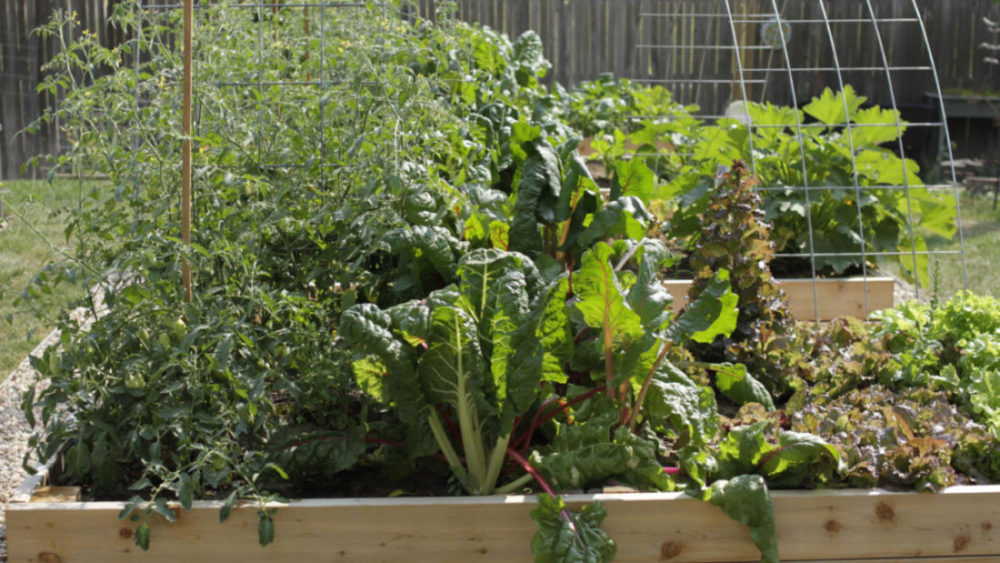
Knowing what to plant each season, along with the plant size and space requirements, will help you create a productive garden. Most fruits and vegetables in each plant family have the same needs for optimal growing (water, season, space, nutrients, whether they like to be direct sowed or can do well as a transplant, etc.).
The cool season consists of temperatures between 35°F to 65°F (1.6°C to 18.3°C). Some cool-season plant families include:
- Brassicaceae (arugula, broccoli, kale, cabbage, etc.)
- Apiaceae (carrots, celery, cilantro, dill, fennel, etc.)
- Fabaceae (peas and beans)
The warm season is 65° F to 85°F (18.3°C to 29.4°C). Some warm-season plants families include:
- Solanaceae (tomatoes, peppers, potatoes, eggplant, etc.)
- Cucurbitaceae (cucumber, watermelon, summer and winter squash, etc.)
- Lamiaceae (basil, sage, rosemary, oregano, etc.)
The hot season is temperatures between 70°F to over 90°F (21°C to over 32°C). Hot season plant families include:
- Convolvulaceae (sweet potato)
- Gramineae (lemon grass, corn, millet)
For more about this, check out Kitchen Garden Revival: a Modern Guide to Creating a Stylish Small-Scale, Low-Maintenance Edible Garden, by Nicole Johnsey Burke and Eric Kelley, pp. 121–121.
As a general rule, when sowing seeds, plant them at a depth that is 2–3 times their width. I highly suggest looking into intensive planting and square foot gardening for spacing plants. Often the spacing recommendations on seed packets are meant for farmers who are using industrial machines. With square foot or intensive planting, you can grow plants closer together. Intensive planting uses similar spacing guides as square foot gardening without planting in exact squares.
Harvesting and Succession Planting
Whichever way you plant, you need to harvest often, taking no more than ⅓ of each plant. Succession planting is key to having a continual harvest. Succession planting means spacing out sowing your seeds by 2–3 weeks so as one set matures others are in various stages of growth. This ensures that you won’t have any single crop coming to maturity at the same time.
You can do this all season long until you reach the spot when there won’t be enough time for the plant to reach maturity before the first fall frost. (If they are not frost-tolerant.) To know when this is, simply look at your seed packet, look for days to maturity, then count back from your first frost date. You can search online for your local frost dates quite easily.
Tending To Your Plants
Tending your garden is pretty simple. It requires that you pay attention to your plants, their watering needs and that you harvest often. This will help you catch any pest issues before they become a big problem and allows you to remove diseased parts of your plants before they can spread.
If you have quality soil and have amended it with compost you shouldn’t need to feed your plants in a single season, except for heavy feeders like squash and tomatoes that will want to be fed every 2–3 weeks. The choice of what to use goes beyond the scope of this post, but I suggest always using organic fertilizers/amendments. Ensure you follow the directions and remember that when it comes to fertilizer of any kind, more does not mean better.
Growing Your Own Food On a Windowsill
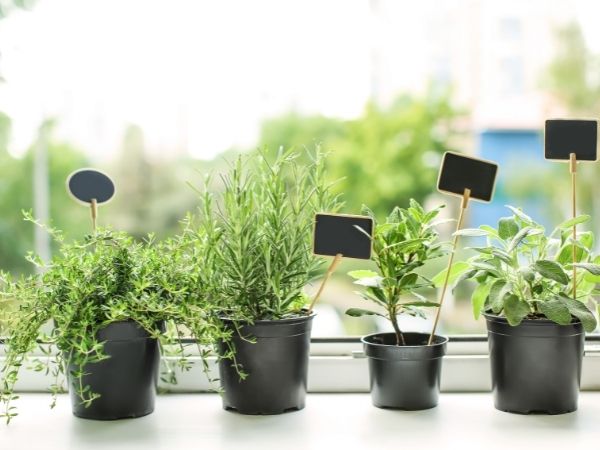
If you live in an apartment or condo and do not have access to a balcony or patio you can grow herbs on a sunny windowsill. All you need is:
- a pot with good drainage
- a tray to catch water
- quality soil specifically for containers
- some herbs to transplant
You will want to make sure that the mature size of your herbs will fit in the container you have chosen and that your windowsill gets 4+ hours of direct sunlight (6 is even better). I recommend containers that are 6 inches deep for healthy roots. There are also small hydroponic garden kits that come with lights and growing medium if you do not have enough light in your space or a good window.
When growing in containers it is important to water consistently at the soil level and feed as suggested on the food package. You also have the option to grow microgreens or sprouts. You can use any food-safe container and quality soil or mats that are specifically made for growing microgreens.
Get your FREE Sprouting Guide plus 40 more free resource guides!
Fill out the form below for instant access.
Free Resource Library
Enjoy more than 40 downloadable guides, recipes, and resources.
What Else Can I Grow On a Windowsill?
You can grow basil, kale, peas, broccoli, and pretty much any seed you would grow in a culinary garden.
Growing Your Own Food on a Patio or Balcony
You can grow many varieties of fruits, vegetables, and herbs on a patio or balcony with the right amount of sunlight. Sunlight will determine what you can grow. If you do not have a lot of direct sunlight, focus on leafy greens and herbs if you have at least 4–6 hours of sunlight in your space.
If you have 6+ hours of sun you can grow roots and fruits. There are many different types of containers to choose from. You can use ceramic pots of many sizes and colours. Grow bags are a great option when you are looking for something that can pack away easily in the off-season. They come in great sizes for growing on a patio or balcony. I recommend no shallower than 6 inches for leafy greens, 16 inches for rooting vegetables like carrots, and 24 inches deep for tomatoes and larger plants.
When it comes to choosing plants or seeds, look for varieties that were bred specifically to be compact or patio varieties. There are many, many options to try.
Growing Food in Your Yard or a Community Garden
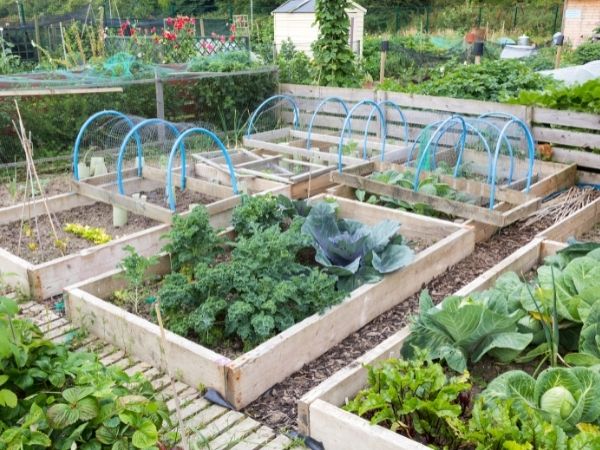
After determining what area is the best place for your garden based on sunlight, proximity to your water source and kitchen, you need to decide what kind of garden you want. You have the option of:
- an in-ground row garden
- raised beds
- containers
- or a combination of the above
The benefits of raised beds are many, which is why I recommend using them. I have grown in a row garden, raised beds, and containers. Raised beds are by far my favorite, with containers second. Cedar and redwood are two of the most used types of wood for raised beds because they are long-lasting and rot-resistant. The best option is wood that is 2 inches thick to hold in your soil without the wood bowing. The optimal height of raised beds is 12–24 inches tall so larger, longer plants or those with long tap roots have room for their roots to grow. Use the highest quality soil you can based on the mix mentioned above.
Whatever kind of space you live in there are options for you to grow some of your own food. All you need is quality soil, amendments, seeds or transplants, enough sunlight, water and your growing method of choice. I invite you to get started growing your own food, and have fun experimenting!
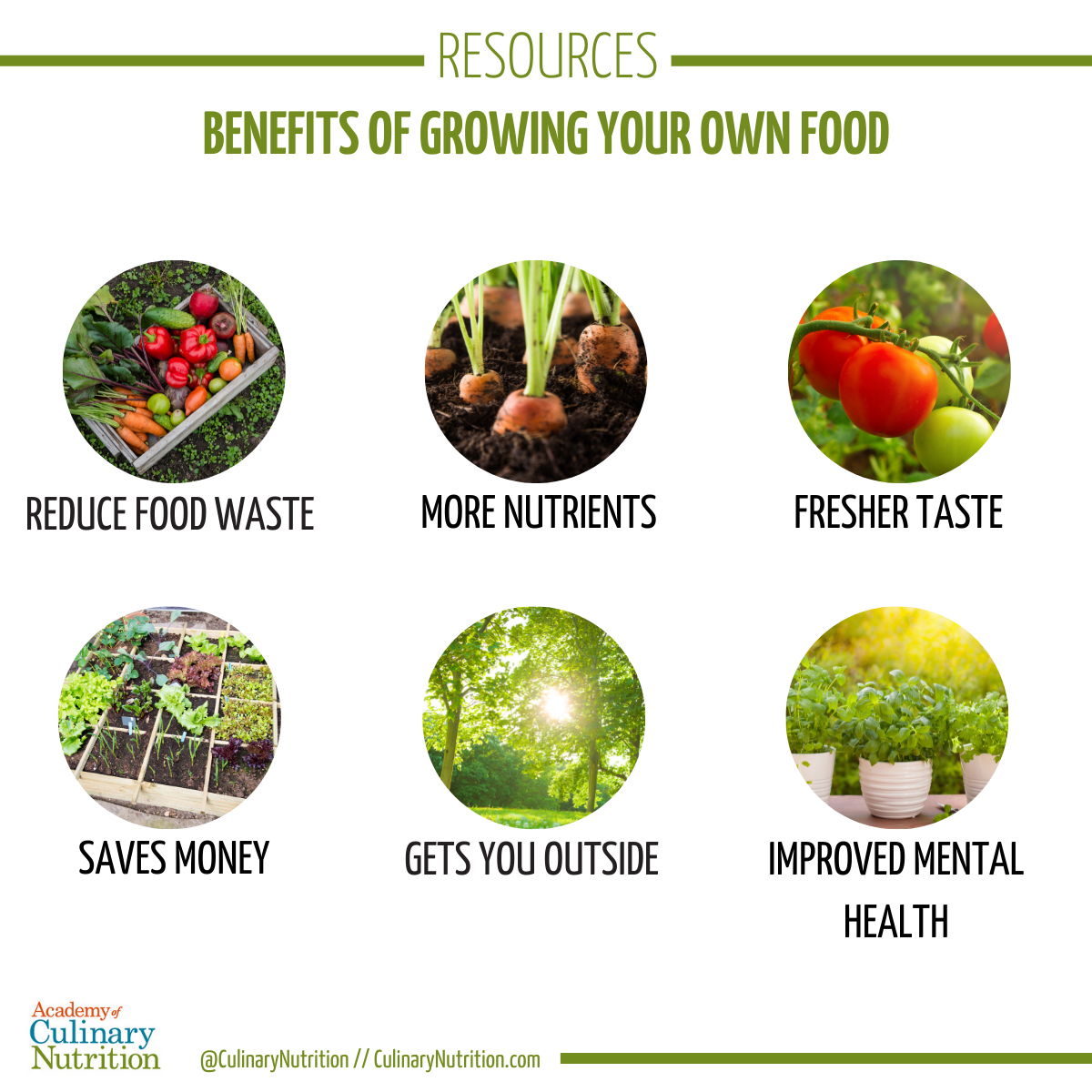
Free Resource Library
Enjoy more than 40 downloadable guides, recipes, and resources.















